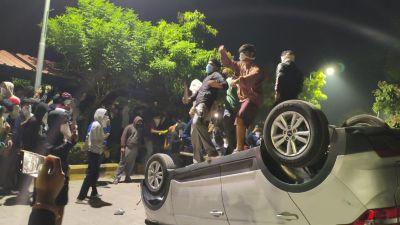Brazil aviation reels after crash
Brazilian President Luiz Inacio Lula da Silva replaced his defence minister on Wednesday, over a week after an airplane crash killed 199 people in Sao Paulo and plunged an already-stressed air traffic system into deeper chaos.

Brazilian President Luiz Inacio Lula da Silva replaced his defence minister on Wednesday, over a week after an airplane crash killed 199 people in Sao Paulo and plunged an already-stressed air traffic system into deeper chaos.
Former Supreme Court president Nelson Jobim will oversee a civil aviation system that has suffered two major air crashes in the past 10 months under outgoing Defense Minister Waldir Pires.
The cause of last week’s crash—in which a TAM airlines jetliner skidded off the main runway of Congonhas airport—has not yet been determined. In February, however, some officials had said that the airport’s runway was unsafe in wet conditions.
Brazil’s air system has also been plagued by months of labour unrest among air traffic controllers, who believe they have been unfairly targeted for criticism since an incident last September in which a Gol Airlines jet collided with a small private plane over the Amazon rain forest, killing all 154 people on the airliner.
“Lula has been accused of procrastinating,” said David Fleischer, an emeritus professor of political science at the University of Brasilia. “The minister should have been replaced last year. Lula just let things slide, hoping that the situation would get better on its own.”
Since last week’s crash, the state of the civil air traffic system—controlled by the military—has grown even worse.
About half of the country’s flights have been either delayed or cancelled this week, leaving thousands of passengers stranded. Over the weekend, during the busiest time for air travel between Brazil and the United States, a radar outage over the Amazon region forced international flights to make unscheduled landings or turn back to their cities of departure. Authorities this week also temporarily suspended the sale of tickets for flights out of Congonhas, the busiest airport in Latin America.
Some of this week’s cancellations were caused by pilots who have refused to land on the Congonhas airport’s auxiliary runways in the rain. The surface of the main runway was replaced just weeks before the crash, and it still has not been grooved—a process that aids the drainage of excess water and improves traction for braking aircraft.
The mounting problems have fallen on the shoulders of Lula, who didn’t address the public until three days after the crash. According to a Datafolha poll conducted over the weekend, 70 per cent of Sao Paulo residents said that his government has not done enough to solve the Brazilian air system’s problems.
During a recent televised speech, Lula promised to build a new airport in Sao Paulo to help deal with increases in air traffic that have stretched the country’s airports beyond capacity in recent years. He said a location would be chosen within 90 days, but construction is expected to take years.
Lula also tried to comfort an increasingly unnerved public, reminding Brazilians that their air system is “compatible with all international standards”. “I want everyone to know that the government is doing the possible and the impossible to investigate the causes of the accident,” he said. “One cannot condemn or absolve anyone on the basis of rushed opinions.”
But the actions of some in his government have undermined that message. Television cameras aimed through an office window caught one of his advisors—Marco Aurelio Garcia—making an obscene gesture after learning that reverse thrusters on the TAM plane had been disconnected.



- 01
- 02
- 03
- 04
- 05



























